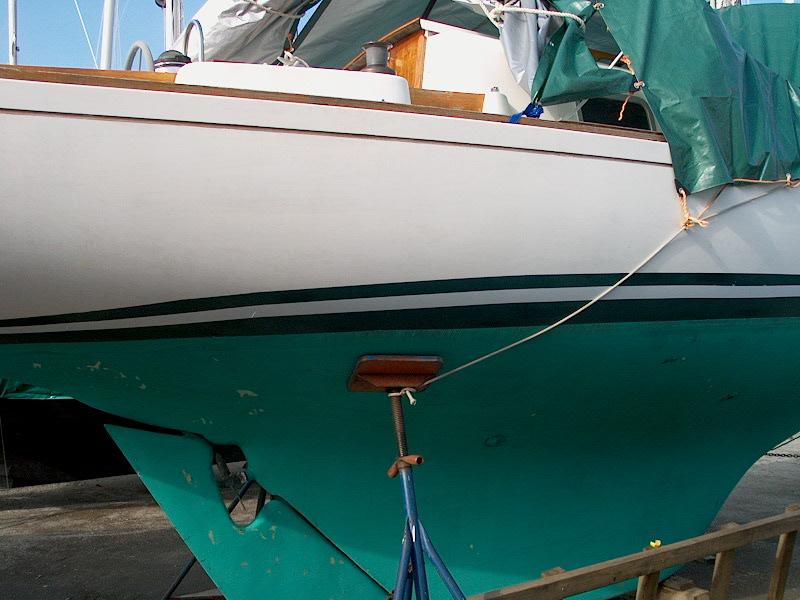Dan,
Funny you should ask. I just spent the past two days (yes, just about all day both days) marking and taping the hull for the double boot stripe and bottom paint. For me, this is a time-intensive and meticulous process, as I am very particular about how boottops look--and the double stripe, with a hull-colored space between the lower stripe and the bottom paint, required striking
five lines on each side of the hull. It simply takes time to mark it out, and then tape it that many times. A single stripe whose bottom edge equals the top of the bottom paint is obviously much easier to strike, with only one line required per side.
To me, the look of the boot top can make or break any boat. They have to be straight, parallel with the water, and must properly account for the
trompe l'oiel caused by the curvature of the hull. When done correctly, it's well worth the effort. A
slight sheer to the top of the stripe can look OK in some circumstances, but only on traditional boats. It's easy to overdo this.
You can read more about my methodology
here, or in Sunday's Daysailor logs, but to answer your more basic question:
Dan wrote:I have a question, Where do you paint the stripe in reference to your new, or an existing water line scribe for that matter?
I think the bottom paint should extend 2" or so above the true waterline--even more in longer boats or boats with high topsides. Not only does this look better, but it reduces or eliminates fouling of the boottop (which looks as bad as can be...). 2" of exposed bottom paint looks about right on a 25-30' sailboat. Then, your boottop would go above this 2" mark.
Do you not have any pre-existing paint lines to go by? If not, and you want an accurate waterline, all you can do is launch the boat, as you say.
Assuming you want your bottom edge of your boottop to butt up against the bottom paint (that is, no hull-color space between), the top edge of the new boot will end up a certain distance above the new bottom paint line, depending on how thick you want your boottop. The actual width of the stripe will vary as you proceed fore and aft, though less so on your boat than on a boat with a curvy counter stern and flared bow sections like a Triton. It's important to do this, or your stripe will appear to droop fore and aft.
There's no hard and fast rule as to how much you need to manipulate the stripe. It depends on the shape of the hull. When viewed from eye level, the stripe should appear straight to the eye, even if in reality it makes odd curves and narrows or widens.
Check out what things look like beneath a Triton counter. The future boot stripes are the white areas between the gray tape...not the tape itself.

But viewed from the site, the stripes appear to be straight.

Sorry for the ramble. Boottops are one of my "things". I always say, there are no bad people...just people with bad boottops.
Don't let this (below) happen to you! This is the worst-looking thing I've ever seen. (And to top it off, his cover is tied to a jackstand...)
Ouch! My eyes! Look away, look away!












